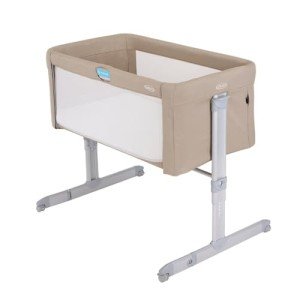5 Laws That Can Help The Bedside Cot That Attaches To Bed Industry
The Modern Bedside Cot: A Comprehensive Guide to Bedside Cots That Attach to Beds
In today's hectic world, parenting has actually developed considerably, with the focus on producing a safe and comfortable environment for infants and toddlers. One of the notable developments in this world is the bedside cot, a versatile service that parents can use to keep their newborns close, especially throughout the important early months. This post explores the advantages, functions, and factors to consider of employing a bedside cot that attaches to a bed.
What is a Bedside Cot?
A bedside cot, typically referred to as a co-sleeper or sidecar crib, is a specifically created crib that connects to a moms and dad's bed, using an available sleeping space for infants. These cots supply the benefit of co-sleeping while preserving a different sleeping environment for the child.
Secret Features of Bedside Cots
- Security Standards: Bedside cots are designed to adhere to high safety standards, ensuring that there are no gaps in between the cot and the parent's bed, hence decreasing the danger of entrapment.
- Adjustable Height: Most bedside cots include adjustable height settings, enabling them to align perfectly with the parents' mattress.
- Convenience: Having the baby within arm's reach can assist with nighttime feedings and soothing, lessening the requirement for parents to fully awaken.
- Mobility: Many models are light-weight and easily collapsible, making them best for travel or for households with limited space.
Advantages of Using a Bedside Cot
The bedside cot provides several benefits, including:
- Enhanced Bonding: The close proximity promotes psychological bonding and security for both the baby and the moms and dad.
- Reduce of Feeding: Breastfeeding mothers can quickly access their babies for nighttime feeds without needing to rise.
- Promotes Safe Sleep: Parents can monitor their child's sleeping patterns and breathing closely, decreasing stress and anxiety.
- Convenient Access: Parents can quickly and quickly soothe or address their baby without completely waking up.
Picking the Right Bedside Cot
With various choices offered in the market, it is essential to consider a number of factors when choosing a bedside cot:
1. Security Features
Always look for safety accreditations, including compliance with relevant requirements. Make sure the cot has functions such as:
- Sturdy frame
- Anti-tipping design
- Protected attachment system
2. Product and Construction
The material needs to be non-toxic and safe for infants. Go with cots made from natural wood or premium licensed products. Also, check that the bed mattress is firm and fits comfortably within the cot to prevent any threats.
3. Size and Compatibility
Think about the size of your bed and the available space in your bedroom. you can try this out can be found in different sizes, so make certain to pick one that fits comfortably along with your bed without obstructing movement.
4. Mobility
If you plan to move the cot regularly, try to find lightweight options with wheels or collapsible styles for easy transportation.
Popular Bedside Cots on the Market
Bedside Cot Model
Secret Features
Cost Range
Chicco Next2Me
Adjustable height, breathability mesh, foldable.
₤ 200 – ₤ 250
BabyBjörn Cradle
Light-weight, natural products, easy to move.
₤ 299 – ₤ 349
Arm's Reach Concept 2
Easy to attach/detach, security strap, bed mattress included.
₤ 150 – ₤ 200
Dream On Me Co-Sleeper
Lightweight, portable, numerous color choices.
₤ 150 – ₤ 180
Frequently Asked Questions (FAQs)
1. Is a bedside cot safe for my baby?
Yes, as long as it satisfies safety requirements and is used correctly. Always ensure the cot is securely connected to your bed without any spaces.
2. At what age can my baby use a bedside cot?
The majority of bedside cots are ideal from birth until the kid can stay up independently or when they start to walk around, generally around 5-6 months.
3. Can I use a typical crib as a bedside cot?
Requirement cribs, while spacious, are not designed to connect to beds and typically lack the safety features that bedside cots provide. It is best to use a cot particularly designed for this function.
4. How do I clean a bedside cot?
The majority of designs have removable, washable fabric covers, while wooden frames can be wiped down with a damp fabric and moderate soap.
5. Are there any disadvantages to utilizing a bedside cot?
While they are convenient, they might not appropriate for all families. Some parents may find they choose a different crib for peace of mind or if their infant has sleep disturbances.
Bedside cots that attach to beds supply a distinct and convenient service for modern parents wishing to keep their infants close during the night. They open doors to much safer co-sleeping alternatives, encourage bonding, and streamline nighttime regimens. With the variety of models readily available, parents should carefully consider their specific needs and preferences, alongside safety features and ease of use, to select the ideal bedside cot. As parenting continues to develop, bedside cots represent a harmonious mix of custom and innovation in fostering a nurturing environment for new families.
